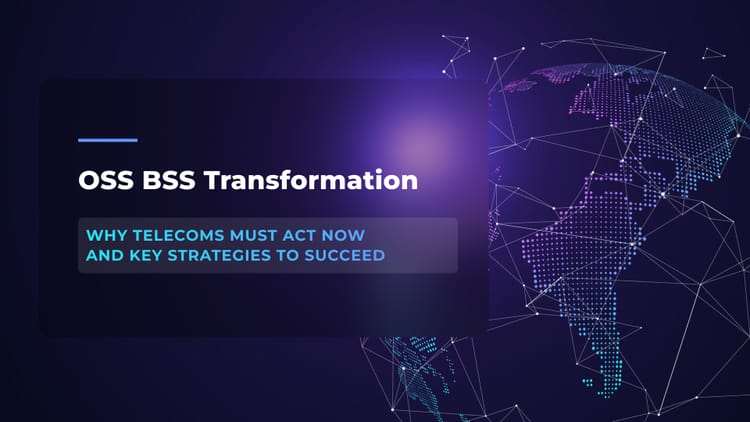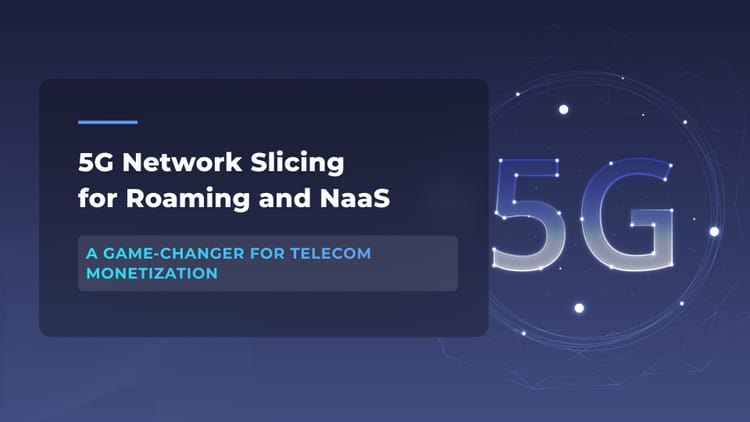Hybrid Cloud for Telecom: Why It's the Best Approach to Cloud Adoption and How to Implement It
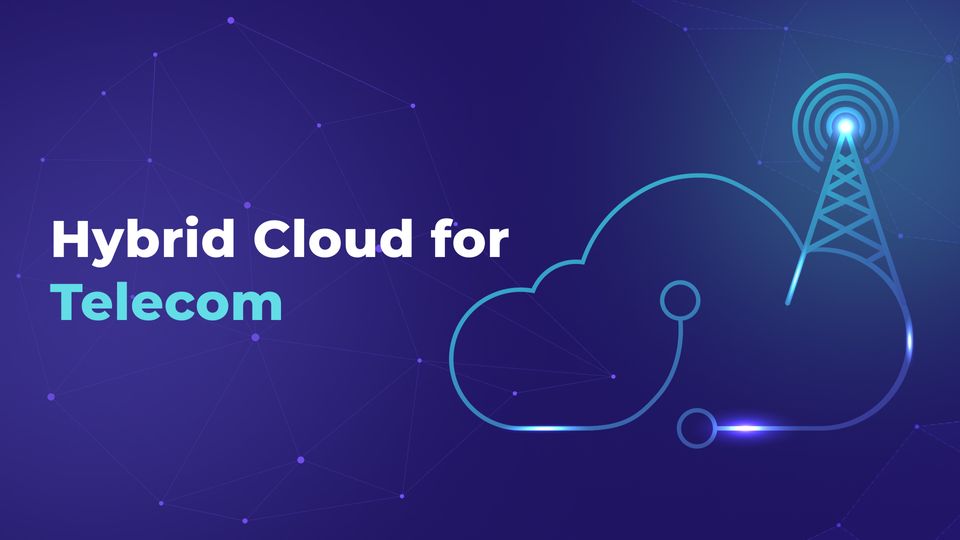
Gone are the days when relying on traditional on-premises with specific hardware for each task was enough. Leading telecom providers worldwide have already recognized the limitations of such an approach and are making a significant shift toward the cloud. But they don't stop there – they are taking an extra step by embracing a groundbreaking hybrid approach to store and manage their data.
According to experts, the hybrid cloud model is set to witness unparalleled growth, expected to soar at a CAGR of 22.8% in the telecom sector until 2030. And it's no wonder why! Just imagine a telecom network that seamlessly integrates cutting-edge 5G technology while still leveraging the reliability of systems that have served you well over the years. That's the power of a hybrid cloud approach for you.
At Flyaps, we've been helping telecom businesses enhance their operational processes through the power of hybrid cloud. We have more than a decade of experience in cloud engineering and a deep understanding of how telecom businesses work, both internally and externally. This makes us perfectly equipped to help telecom companies move safely from their traditional on-premises setups to cloud-based solutions.
In this article, we will explain what a hybrid cloud is, how it can benefit your business, and what a typical adoption strategy looks like. We will also share an inspiring story of one of our clients who embraced cloud adoption and witnessed a positive transformation in their telecom business. So, keep reading!
What is a hybrid cloud?
In a nutshell, a hybrid cloud is an approach that refers to the usage of a mix of different cloud computing environments to run applications and store data. There are two types of clouds businesses can use: private and public ones.
Private cloud
With a private cloud all the computing resources, such as servers, storage, and networking infrastructure, are used only by one organization and not shared with others. Private clouds can be set up in a company's own data centers or in a data center run by a cloud service provider (CSP). But the important thing is that only people within this organization can access the cloud services and data.
In this case, telcos have more control over their infrastructure, so they can comply with regulations and follow their company security policies. However, setting up a private cloud may need a bigger initial investment and ongoing maintenance compared to using public cloud services.
From cloud migration to telecom-specific AI solutions, we have delivered over 20 projects that are used by hundreds of MNOs and telecom companies worldwide. Check our capabilities and let’s discuss your next solution.
See our servicesPublic cloud
It is a big storage space that provides computing resources and services over the internet to multiple users and organizations. These resources, such as servers, storage, and applications, are owned and managed by hyperscale cloud providers (HCP), like Amazon, Microsoft, or Google. It's used to handle a lot of data and applications because it's cost-effective and scalable.
Unlike private clouds, public clouds are shared among multiple users who access and use the services on a pay-as-you-go basis. These services are available to the general public, so anyone with internet access can use them. But don't worry, it doesn't mean everyone can access your data. Except for service providers. For example, when you use Amazon Web Services (AWS), you need to allow Amazon to access your data and applications. This might be a problem for telcos with high-security needs.
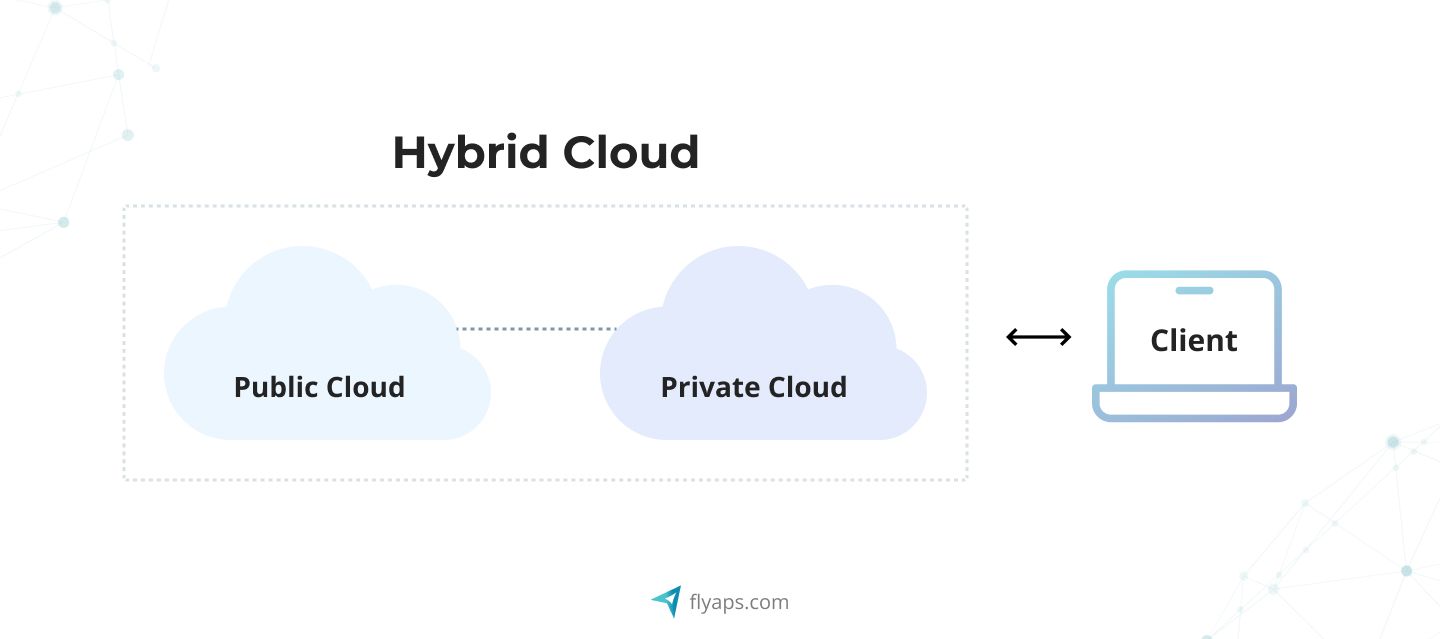
The role of the hybrid cloud in telecom infrastructure
In telecommunications, the hybrid cloud approach assumes that all the sensitive data (like personal identifiable information (PII), billing and payment data, network configuration and access credentials) that requires extra security is stored in a private cloud. But as telecom companies have to remain flexible and scalable in the modern world, they could use public clouds to store less sensitive data.
This way, leading telcos get the best of both worlds – top-notch security for sensitive stuff and the advantages of cloud services, such as cost-effectiveness and easy access to resources, for everything else. It's like having a safe room for your most valuable items while using a convenient storage space for the rest of your belongings.
Now, let's consider some other benefits of this approach!
Benefits of implementing a hybrid cloud solution
Hybrid cloud solutions offer several significant benefits for telecom companies, addressing various aspects of data management and business operations.
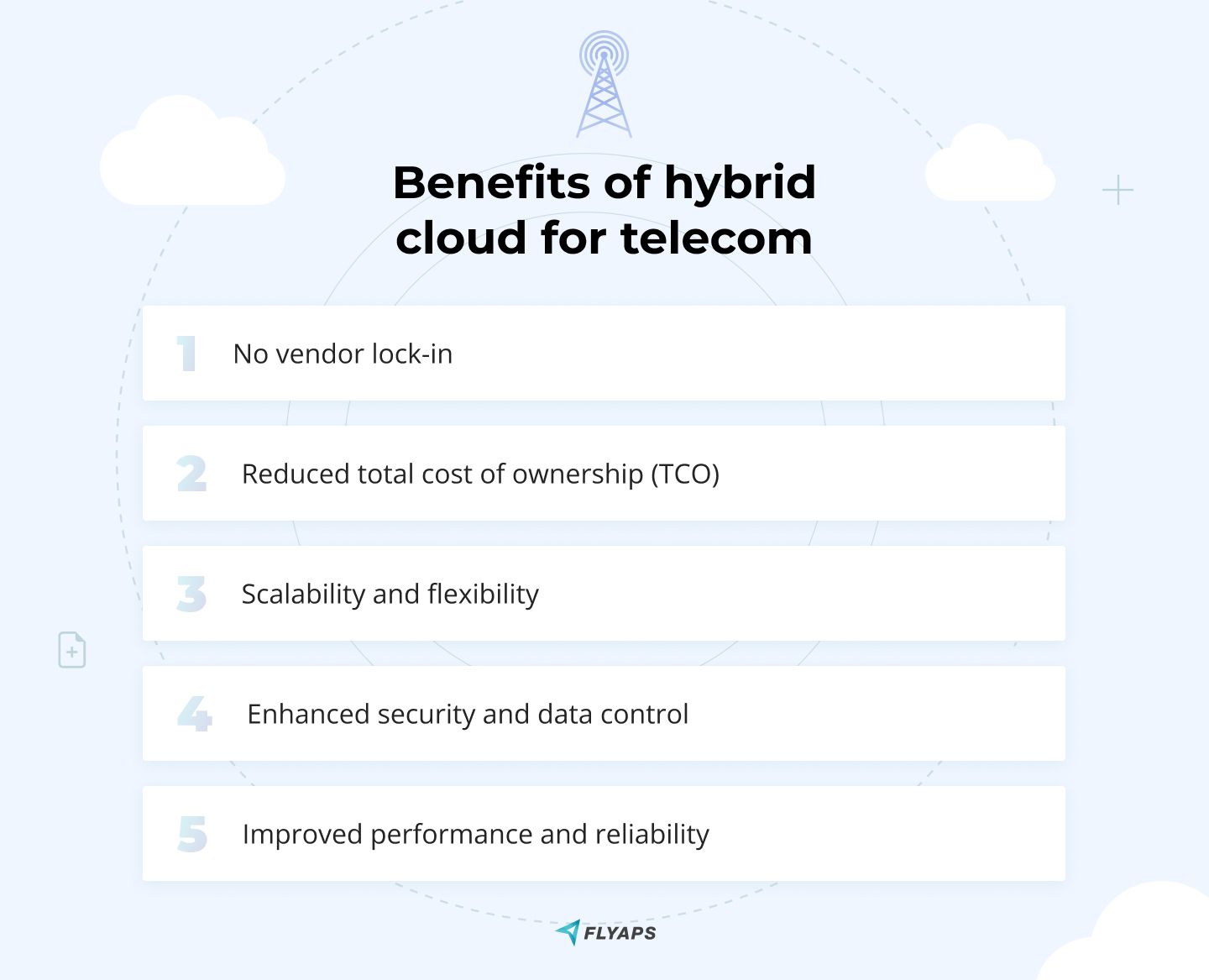
- No vendor lock-in: Telecom companies can leverage the best services from different cloud providers without being tied to a single vendor. This flexibility enables them to choose the most suitable solutions for their specific needs, promoting innovation and agility in their operations.
- Reduced total cost of ownership (TCO): By strategically placing sensitive data in a private cloud and non-sensitive data in a public cloud, telcos can achieve a perfect balance between data management and security. This approach ensures cost-effective use of resources while maintaining high levels of data protection.
- Better scalability and flexibility: With the ability to scale resources up or down depending on the demand, telcos can effortlessly handle varying workloads, such as managing sudden traffic spikes or seasonal fluctuations. This dynamic scalability ensures optimal performance and enhanced customer experiences.
- Enhanced security and data control: So we don’t repeat ourselves, we will only add here that by controlling data access and storage locations, telecom businesses gain better control over data agility and enhance their overall security posture. It's like having a key to a locked box where businesses can decide who can open it and where to keep it, making sure that only the right people can access the important information and keeping it well-protected from any potential threats.
- Improved performance and reliability: With hybrid cloud solutions, the data moves more efficiently between the company and its customers. Think of it as having a super-fast and reliable highway for information that makes the services run faster and more smoothly for customers.
Best practices for adopting a hybrid cloud for telecom
In general, a hybrid cloud strategy can be divided into five main stages:
- Assessing existing infrastructure, requirements, and understanding API options.
- Selecting the right mix of CSP and HCP services.
- Creating a hybrid cloud architecture.
- Integrating and automating user access.
- Ensuring smooth data migration and real-time ETL.
Let's take the example of a big telecom company that wants to move its operations to the cloud using a hybrid cloud approach. Our imaginary telco has been around for a long time and wants to make the transition to the cloud without any hiccups, so they reached to the software development company for additional help. Here's how they would have navigated through the different stages of adopting a hybrid cloud approach.

1. Assessing existing infrastructure, requirements, and understanding API options
To prepare for their hybrid cloud journey, the telco's IT team and the software development company started with an in-depth assessment of their existing infrastructure and workloads. They carefully categorized their applications into two critical groups.
a. Private data center: Under this group fall applications that deal with sensitive customer data and provide critical services, such as billing and account management. By moving these apps to the private data center, the telco could maintain maximum control over customer data and comply with strict data privacy regulations, ensuring the utmost security for their customers' information.
b. Public cloud infrastructure: For applications related to non-sensitive data, customer support, and marketing campaigns, the company opted for a public cloud environment that would be more suitable. Such benefits as the potential for rapid development, scalability, and global reach by leveraging the public cloud offerings of tech giants like Amazon Web Services (AWS) and Google Cloud Platform (GCP) - including AI development platforms - sure contributed to the choice.
During this assessment, the telco also delved into getting to know their application program interface (API) options. They knew that moving to a hybrid cloud model required integrating their existing on-premises applications with newer cloud-based software. The software development company worked with the company to study each application and determine if they had open APIs, which would make integration easier.
Fortunately, some of their applications already had open APIs, providing them with a head start on the integration process. But they also had to consider the costs involved in syncing up legacy apps with cloud resources. While some vendors offered API access at an additional fee, the company and their partner made well-informed decisions on the best API options that fit their budget and integration needs.
2. Selecting the right mix of CSP and HCP services
With a clear understanding of their requirements, the telco's IT team moved on and started evaluating various CSPs and HCP services. They carefully considered the offerings, capabilities, and security features of providers like AWS and GCP.
In our scenario, the telco ended up choosing AWS for hosting some of their applications due to its reliable infrastructure and extensive services. However, when it came to processing and analyzing vast amounts of customer data, they opted for GCP's exceptional big data capabilities. By combining the strengths of different cloud providers, the company achieved optimal performance for each specific task.
3. Creating a hybrid cloud architecture
The next important step for the telco's IT team and the cloud engineers and architects they worked with was to make sure that data could flow smoothly and securely between their private data center and the public cloud infrastructure. To do this, they designed a smart hybrid cloud architecture that took into account data security, following all the rules and regulations, as well as proper governance.
4. Integrating and automating user access
One of the key challenges for the telco was managing user access during the transition to a hybrid cloud. They had to make sure their employees had the right access levels to both on-premises apps and cloud resources. Understanding the full scope of AI development costs in 2025 can help telecoms better plan for such integrations.
Together with the partnering software development company, the telco addressed user governance-related challenges, such as defining user roles, password policies, automating account creation and updates, and complying with data security requirements. Automation played a crucial role, making it easier to manage user access seamlessly in the future.
5. Ensuring smooth data migration and real-time ETL
With their hybrid cloud environment up and running, the telco needed smooth and secure communication between their on-premises apps and the public cloud resources. The software development company they collaborated with ensured a dedicated, encrypted connection for bidirectional data transfer.
To make it all work seamlessly, the team planned for effective extracting, transforming, and loading (ETL) of data in real-time. This allowed the legacy apps and cloud resources to update transactions and logs as user activities took place, enabling smooth and efficient operations.
As a result of their successful adoption of a hybrid cloud strategy, the company achieved greater flexibility, scalability, and security in their operations. They efficiently managed sensitive data while taking advantage of the rapid development and global reach offered by public cloud providers. The company remained at the forefront of the telecom industry, delivering innovative services to customers across the globe.
How Flyaps can help you with hybrid cloud for telecom
For 10 years, Flyaps has been working in the telecom industry, creating products that have been embraced by over 100 telecom companies, including major players like Orange Group, Hutchison 3G and Telenor Group. Renowned companies like Yaana Technologies have trusted our team to help them smoothly migrate their operations to the cloud.
We are glad to offer our expertise to telcos like yours, letting you enjoy the benefits of a cloud environment. Here are some ways we can help with adopting a hybrid cloud for telecom:
- Seamless integration between on-premises and public cloud environments: Flyaps is great in creating a smooth and efficient connection between your on-premises applications and the public cloud. Our expert team ensures that your data and applications seamlessly flow between both environments, allowing you to enjoy the benefits of both private and public cloud resources without any disruptions.
- Deploying advanced encryption techniques and access controls: Security is a top priority for us. We implement state-of-the-art encryption techniques and robust access controls to safeguard your sensitive data in the hybrid cloud. Rest assured that your critical information remains protected from unauthorized access, ensuring compliance with data privacy regulations.
- Integrating automation and orchestration tools for streamlined resource management: Managing resources in a hybrid cloud can be complex, but Flyaps makes it simple. We integrate powerful automation and orchestration tools that streamline the provisioning, scaling, and overall management of your resources. This automation minimizes the amount of manual effort, boosts efficiency, and optimizes resource utilization.
- Setting up monitoring tools for real-time visibility: Flyaps provides you with real-time visibility into the performance of your applications and infrastructure across both private and public clouds.
- Monolith to microservices migration: If you have existing monolithic applications, we can help you modernize your architecture through cloud microservices migration. At Flyaps we have vast experience of breaking down complex monolithic structures into smaller, independent microservices, ensuring flexibility, scalability, and easier maintenance in the hybrid cloud environment.
Take your telco to new heights with the revolutionary power of the hybrid cloud. Drop us a line now!

